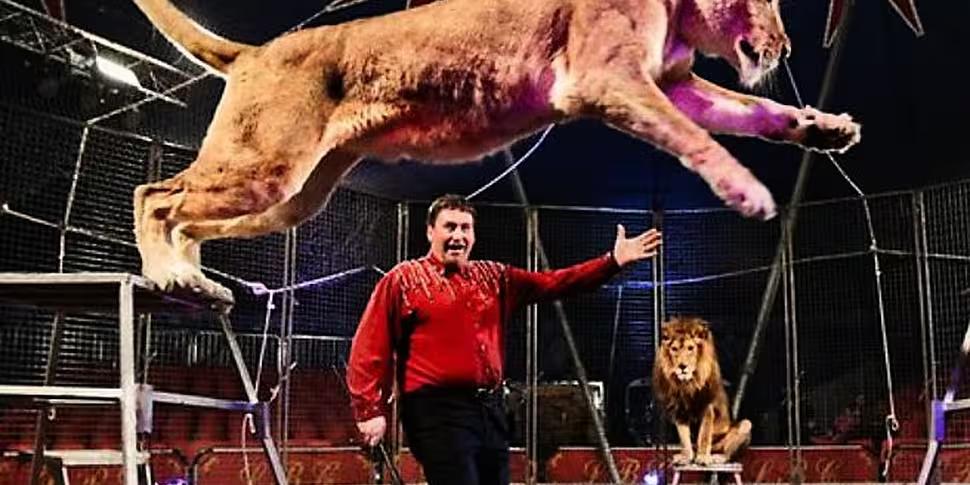Last week over a thousand clowns and acrobats took to the streets of Mexico City in a protest over a proposed law that would see a ban on the use of animals in the circus.
According to protest organisers, the ban could affect over 50,000 people employed in the industry as well as up to 4,000 animals. Lions, tigers, horses, bears and dogs are included on a list of banned animals and from next year any circus that flouts the law could pay as much as E45,000 in fines.
The President of the National Circus Association in Mexico, Arnando Cedeno, said that the animals are well treated and that they would have nowhere to go if the law was passed.
He also pointed out that the animals would die if sent back to their natural habitats.
Cedeno’s point about the future welfare of the animals currently in his members’ care is a pertinent one and presumably there is little hope of the animals in question actually being shipped and trucked back to their places of origin. Instead it is likely that these 4,000 or so animals will have to be destroyed. That in and of itself is a mournful prospect but in the long-term the proposed measure will benefit the animal kingdom.
There is also the fact that not every circus owner shares Cedeno’s apparent concern for his or her animals. It is horrible to say but if we consider the conditions most circus animals reportedly live in perhaps they are probably better off dead.
According to The Progressive Animal Welfare Society, “96% of a circus animal’s life is spent in chains or cages”. Animal advocacy group Born Free USA says that “animals in circuses spend about eleven months of the year travelling and may be caged or chained for hours over long distances, [and] forced to stand in their own waste, in extreme temperatures.”
Just last week, in the Czech Republic, an eight-year-old sea lion died while being transported from one city to another. The sea-lion’s tank had been emptied of water in order to make it lighter and therefore quicker to transport.
Born Free USA also say that between1994 and 2005, at least 31 elephants have died premature deaths in the circus in the United States.
In Britain a 2010 undercover investigation carried out by the Captive Animals Protection Society (CAPS) documented ill-treatment of animals in various circuses across the country. In one instance they show an elephant being loaded onto a truck in which he could not turn five hours before the circus left the site. Most of the animals filmed are seen either pacing or rocking back and forth endlessly in confined and filthy spaces.
CAPS also reported that three wild animals – a tiger, a zebra and a python – had died in suspicious circumstances while part of a travelling circus that used them in their acts.
Not only animals are in danger when the circus comes to town of course. In March 2012 an elephant escaped twice from a Courtney Brother’s Circus that was visiting Cork. In one attempted break-out the same animal even managed to trample his trainer resulting in the latter’s hospitalisation.
In the U.S.A. there have been a reported 123 (captive) lion attacks since 1990, while in the same country there have been at least 35 cases of elephants bolting from circuses since 2000.
Campaigners against the use of animals in the circus appear to be making some progress. Last month, Norway’s seventh largest city, Tromso, became the first local council in the country to secure a ban on the use of all wild animals on public land while the governments of Greece, Cyprus, Paraguay and Peru have all banned the use of wild animals in performances.
Two years ago the UK government announced that a ban on circus animals would come into effect from 2015; although there are some fears they might be back tracking or at least shelving the legislation until after the next election.
A survey conducted by YouGov found that British people were strongly in favour of a ban. 81% of those polled said the use of bears should be banned while one in ten said the use of tigers should also be made illegal. 74% of those surveyed said they no longer wished to see elephants performing in circuses.
Presumably, a poll in this country would render similar results. Whether it’s down to the collapse in the economy or an increase in distaste the numbers of animals used in circuses has dropped dramatically in recent years. A 2006 CAPS report on circuses in Ireland found there were seven circuses that between them used 102 animals in their shows. Of those, 33 were classed as wild and 69 domestic. Six years later CAPS, conducting a similar report, found that four circuses used a total of 58 animals, 16 of which were wild and 42 domestic.
Tentative steps have been made to halt the practise in Ireland. In July 2013 The Sunday Times reported that ministers from Dublin and Belfast “had appointed officials to develop an all-Ireland policy on whether wild animals should be allowed in circuses”. Little has been heard since and in all likelihood any legislation will probably stand still until a move is made in Britain.
Until then the debate will carry on, albeit rather quietly. Thousands of children will continue to be brought to the circus and will stand hand in mouth gazing at these animals as they jump through fire or stand on tiny stools. Parents might like to think their children are filled with wonder but there’s a part of us that knows the child is thinking: “There’s something not quite right here. The animals look so sad.”
Around the World - every Monday from 3pm on Moncrieff
Follow Jonathan on twitter @deburcabutler









